Burial Pere Lachaise Cemetery Parents Michel Heine | Name Alice Heine | |
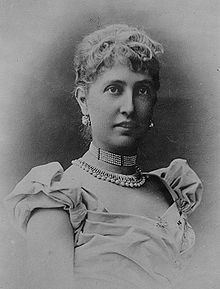 | ||
Reign 30 October 1889 – 26 June 1922 Issue Armand Chapelle de Jumilhac, 8th Duke of Richelieu & FronsacOdile Chapelle de Jumilhac, Princess de La Rochefoucauld Mother Amelie Marie Miltenberger Spouse Albert I, Prince of Monaco (m. 1889), Marie Odet (m. 1875) Children Odile Chapelle de Jumilhac du Plessis de Richelieu Similar People Antoinette de Merode, Albert I - Prince of Monaco, Louis II - Prince of Monaco | ||
Grandchildren Anne de La Rochefoucauld Similar Tasziló Festetics, Princess Marie Amelie of Baden, Mary Victoria Douglas Hamilton | ||
Alice Heine (February 10, 1858 – December 22, 1925), styled HSH The Princess of Monaco, previously The Duchess of Richelieu, was the American-born second wife of Prince Albert I of Monaco, a great-grandfather of Prince Rainier III of Monaco and great-great grandfather of reigning prince Albert II of Monaco. Marcel Proust used her as a model for the Princesse de Luxembourg in his novel, In Search of Lost Time. Her first husband was the Duke of Richelieu, and one of the titles of her second husband was the Duke of Mazarin; she was thus unique in bearing the titles of both Cardinal Richelieu and Cardinal Mazarin.
Contents
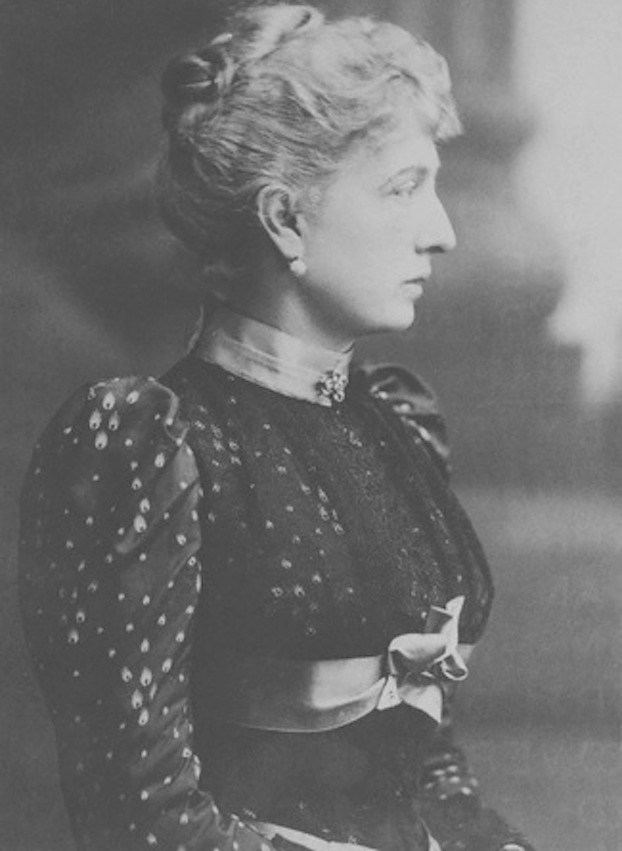
Life and family
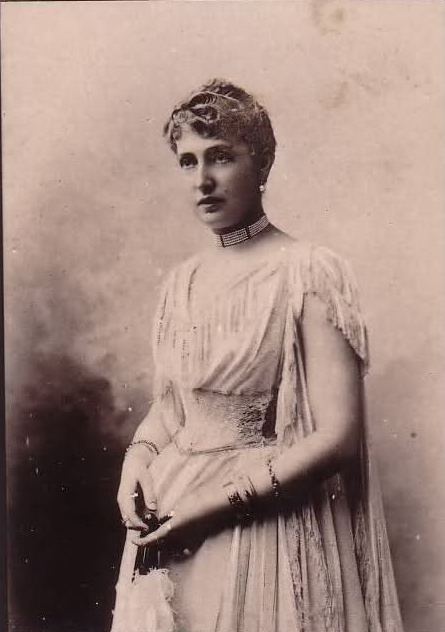
She was born Marie Alice Heine at 900 Rue Royale, in the French Quarter of New Orleans, Louisiana. Her French father, Michel Heine, was a scion of a prominent German-rooted Berlin and Paris banking Jewish family. His brother was Armand Heine, and both were cousins of poet Heinrich Heine. He was born in Bordeaux, France, and moved to New Orleans in 1843, and become a successful financier and real-estate developer. Her mother was Amélie Marie Céleste Miltenberger, daughter of Joseph Alphonse Miltenberger, an architect of French Alsatian descent; her family had built three interconnected Miltenberger mansions on Rue Royale.
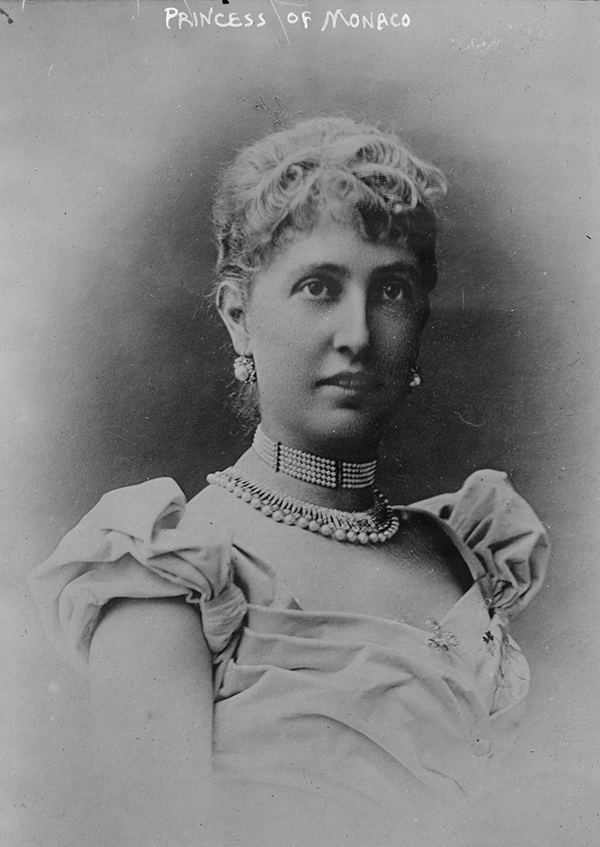
She has two younger brothers, Paul Henri and Isaac Georges.
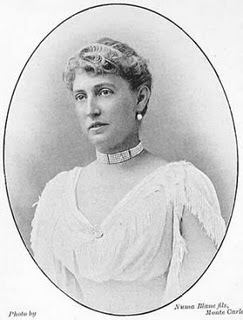
The American Civil War sent the family back to France, where the teenaged Alice's youth and beauty and her family's wealth, made a great impression in Parisian society. A & M Heine, her father's firm, helped finance Napoleon III’s war with Prussia.
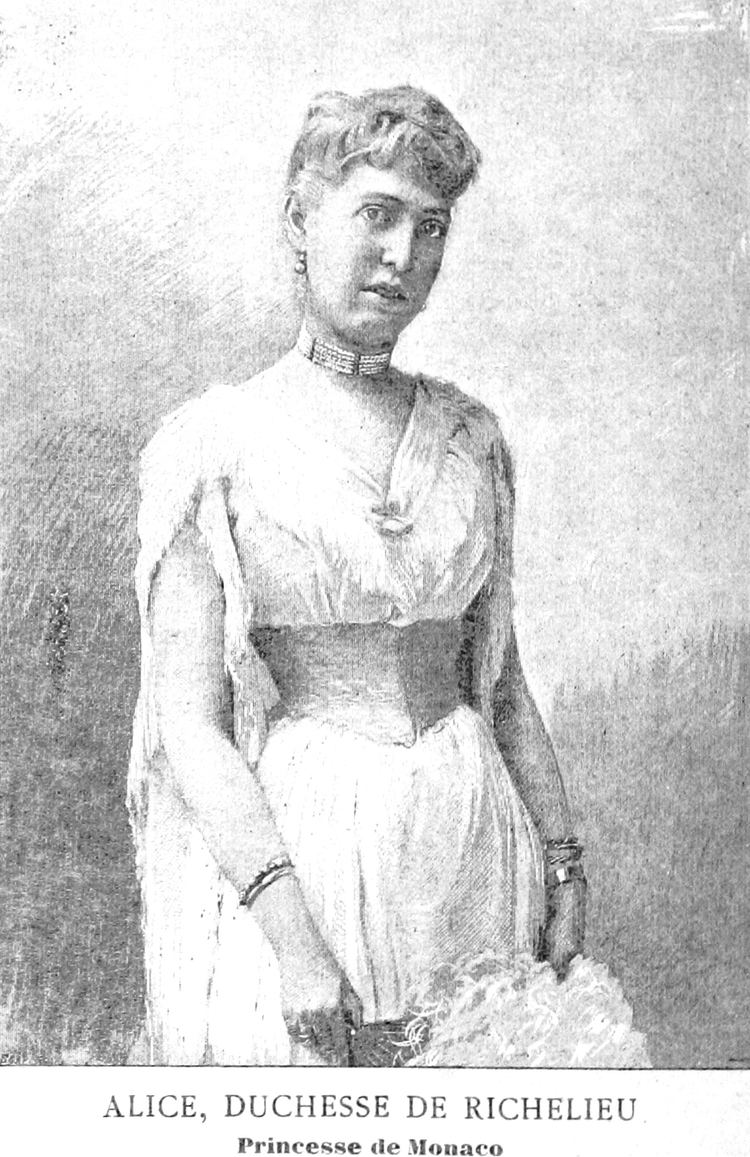
Jewish by birth, Alice converted to Roman Catholicism when she married her first husband, Marie Odet Armand Aimable Chapelle de Jumilhac, Marquis of Jumilhac then 7th Duke of Richelieu and Duke of Aiguillon, in Paris on February 27, 1875. They had one son and one daughter:
Alice's second marriage, to Prince Albert I of Monaco, Sovereign Prince of Monaco, occurred on October 30, 1889. The prince, whose first wife had been a daughter of a Scottish duke, was an oceanographer. She was credited with having caught the first specimen of Grimaldichthys profundissimus, long thought to be the deepest-living fish in the world's oceans. However, during her husband's long journeys at sea, Alice took a greater interest in the Monegasque opera season. The courtesan Caroline Otero (La Belle Otero), who had been a part-time lover of the prince between 1893 and 1897, recalled the prince fondly in her memoirs and claimed that he wasn't a virile man and suffered from erection difficulty.
She brought a strong business acumen, showing an understanding far beyond her years. Having helped put her husband's principality on a sound financial footing, she would devote her energies to making Monaco one of Europe's great cultural centers with its opera, theater, and the ballet under the direction of the famed Russian impresario, Sergei Diaghilev. Her affair with composer Isidore de Lara resulted in Prince Albert slapping her in view of an audience at the Salle Garnier.
The Prince and Princess of Monaco separated judicially on May 30, 1902 (Monaco) and June 3, 1902 (France), but remained married. Upon the prince's death 20 years later, Alice became the Dowager Princess of Monaco. She did not remarry.
Her former home in New Orleans is now the Café Amelie and advertises itself as a setting for weddings, receptions, special parties and the like.
